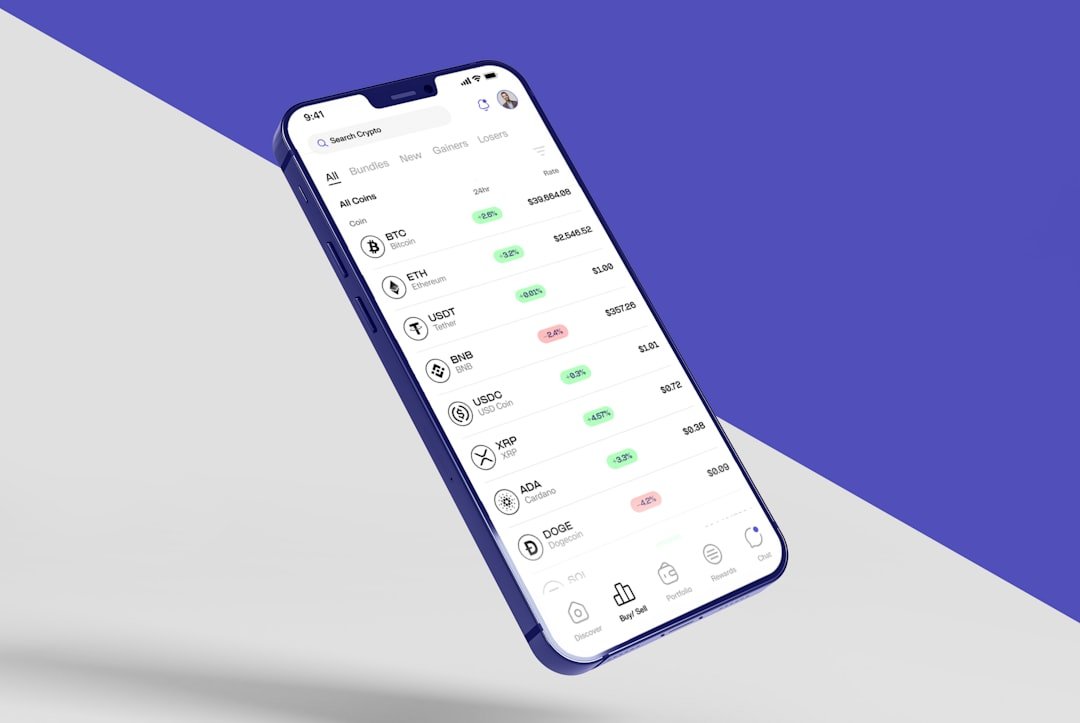Now Reading: Shaping Future Updates: Player Feedback’s Impact
-
01
Shaping Future Updates: Player Feedback’s Impact
Shaping Future Updates: Player Feedback’s Impact

As a game developer, I have come to realize that player feedback is not just a valuable resource; it is the lifeblood of successful game development. The gaming community is diverse, with players bringing unique perspectives and experiences that can significantly influence the direction of a game. By actively seeking and valuing player input, I can create a more engaging and enjoyable experience that resonates with my audience.
This feedback loop fosters a sense of community and belonging among players, making them feel like they are part of the development process rather than mere consumers. Moreover, player feedback serves as a critical tool for identifying issues that may not be apparent during the development phase. While I strive to create a polished product, I understand that no game is perfect upon release.
Players often encounter bugs, balance issues, or design flaws that I may overlook. By listening to their experiences and concerns, I can address these problems more effectively, ensuring that the game evolves in a way that meets the expectations and desires of its audience.
Key Takeaways
- Player feedback is crucial for game development as it provides valuable insights into player preferences and experiences.
- Methods for gathering player feedback include surveys, focus groups, social media monitoring, and in-game feedback tools.
- Analyzing and prioritizing player feedback involves identifying common themes, evaluating the impact on player experience, and prioritizing changes based on feasibility and impact.
- Incorporating player feedback into update planning requires careful consideration of how changes align with the game’s vision and design principles.
- Balancing player suggestions with game design vision involves evaluating the potential impact on game balance, mechanics, and overall player experience.
Methods for Gathering Player Feedback
To effectively gather player feedback, I employ a variety of methods that cater to different segments of the gaming community. Surveys and questionnaires are among the most straightforward approaches, allowing me to collect quantitative data on player preferences and experiences. By crafting targeted questions, I can gain insights into specific aspects of the game, such as mechanics, storylines, or user interface design.
This method not only provides me with valuable information but also encourages players to share their thoughts in a structured manner. In addition to surveys, I find that engaging directly with players through forums and social media platforms can yield rich qualitative feedback. These channels allow for open discussions where players can express their opinions in their own words.
I often participate in these conversations, asking follow-up questions to delve deeper into their experiences. Live streams and playtesting sessions also offer an opportunity for real-time feedback, enabling me to observe player reactions and gather immediate responses to new features or changes. By utilizing a combination of these methods, I can create a comprehensive understanding of player sentiment.
Analyzing and Prioritizing Player Feedback

Once I have gathered player feedback, the next step is to analyze and prioritize it effectively. This process involves sifting through the data to identify common themes and trends that emerge from player responses. I often categorize feedback into different areas, such as gameplay mechanics, narrative elements, and technical issues.
This organization helps me pinpoint which aspects of the game require immediate attention and which can be addressed in future updates. Prioritization is crucial because not all feedback carries the same weight. Some suggestions may come from a vocal minority, while others reflect the sentiments of a larger segment of the player base.
To navigate this challenge, I consider factors such as the frequency of similar feedback, the potential impact on gameplay, and alignment with my overall design vision. By balancing these elements, I can make informed decisions about which changes to implement first, ensuring that I address the most pressing concerns while still maintaining the integrity of the game.
Incorporating Player Feedback into Update Planning
Incorporating player feedback into my update planning is an essential step in creating a responsive development cycle. After analyzing and prioritizing the feedback, I begin to outline actionable items that can be integrated into upcoming patches or expansions. This process often involves brainstorming sessions with my team to explore how we can implement changes while preserving the core experience of the game.
I also recognize the importance of setting realistic timelines for these updates. While it may be tempting to rush changes based on player demand, I understand that quality should never be compromised for speed. By carefully planning updates and communicating timelines to players, I can manage expectations and build anticipation for new content.
This approach not only enhances player satisfaction but also reinforces their trust in my commitment to improving the game based on their input.
Balancing Player Suggestions with Game Design Vision
While player feedback is invaluable, I must also balance it with my original design vision for the game. As a developer, I have a specific artistic direction and gameplay philosophy that guide my decisions. It is essential to remain true to this vision while still being open to constructive criticism from players.
Striking this balance can be challenging; however, it is crucial for maintaining the integrity of the game. To achieve this equilibrium, I often engage in discussions with my team about how certain player suggestions align with our design goals. Sometimes, feedback may inspire innovative ideas that enhance the game without deviating from its core principles.
Other times, I may need to explain why certain suggestions cannot be implemented due to technical limitations or design constraints. By fostering an open dialogue with players about these challenges, I can help them understand the complexities of game development while still valuing their input.
Addressing Common Player Concerns and Requests

Balancing Gameplay Difficulty
To address this concern, I strive to implement adjustable difficulty settings that cater to a broader range of player preferences. This allows players to tailor their experience to their individual skill levels and preferences.
Content Updates and Expansions
Another common request revolves around content updates and expansions. Players are eager for new features, storylines, or characters that enrich their gaming experience. They want to see the game evolve and improve over time, with fresh content that keeps them engaged.
Meeting Player Demands
To meet this demand, I prioritize creating regular content updates that introduce fresh elements while ensuring they align with the game’s narrative and mechanics. By actively listening to these concerns and requests, I can create a more satisfying experience for players while keeping them engaged with ongoing developments.
Testing and Iterating on Player-Driven Updates
Once I have incorporated player feedback into updates, rigorous testing becomes paramount before releasing any changes to the public. This phase allows me to identify potential issues or unintended consequences resulting from new features or adjustments. Playtesting sessions with both internal teams and select community members provide valuable insights into how changes are received in real-world scenarios.
Iteration is also a critical aspect of this process. Based on testing results and additional player feedback, I may need to refine or adjust updates before they go live. This iterative approach ensures that I am not only responding to player input but also delivering high-quality content that enhances the overall experience.
By embracing this cycle of testing and iteration, I can create updates that resonate with players while minimizing disruptions to gameplay.
Communicating Changes to the Player Community
Effective communication is vital when it comes to informing players about changes made based on their feedback. Transparency fosters trust within the community and helps players feel valued as contributors to the game’s development. I often utilize developer blogs, social media posts, and community forums to share detailed information about upcoming updates and the rationale behind specific changes.
In addition to outlining what has been changed or added, I make it a point to acknowledge player contributions directly. Highlighting specific suggestions or concerns raised by players demonstrates that their voices are heard and appreciated. This practice not only strengthens community engagement but also encourages ongoing dialogue between developers and players.
Measuring the Impact of Player Feedback on Updates
After implementing updates based on player feedback, it is essential for me to measure their impact on gameplay and overall player satisfaction. This evaluation process involves analyzing metrics such as player retention rates, engagement levels, and community sentiment following an update’s release. By tracking these indicators, I can assess whether the changes have positively influenced the player experience.
Additionally, gathering post-update feedback through surveys or community discussions allows me to gauge how well players received the changes. This information is invaluable for understanding what worked well and what may need further refinement in future updates. By continuously measuring the impact of player feedback on updates, I can ensure that my development efforts remain aligned with player expectations.
Building Trust and Engagement Through Player-Centric Updates
Building trust within the gaming community is an ongoing endeavor that requires consistent effort and dedication. By prioritizing player-centric updates that reflect their feedback and concerns, I can foster a sense of loyalty among players who feel invested in the game’s evolution. This trust is further reinforced by maintaining open lines of communication and being transparent about development processes.
Engagement goes hand-in-hand with trust; when players see their suggestions being implemented or acknowledged, they are more likely to remain active participants in the community. Hosting events such as Q&A sessions or developer livestreams allows me to connect directly with players and provide insights into upcoming changes or features. These interactions create a sense of camaraderie between developers and players, ultimately enhancing the overall gaming experience.
The Future of Player Feedback in Shaping Game Development
As technology continues to evolve and gaming communities grow more interconnected, I believe that player feedback will play an increasingly pivotal role in shaping game development’s future. The rise of social media platforms and online forums has made it easier than ever for players to voice their opinions and share their experiences with developers like myself. This trend will likely lead to even more collaborative development processes where player input directly influences design decisions.
Looking ahead, I envision a future where developers leverage advanced analytics tools to better understand player behavior and preferences in real time. By harnessing data-driven insights alongside qualitative feedback, I can create more personalized gaming experiences that cater to individual player needs. Ultimately, embracing this collaborative approach will not only enhance game quality but also strengthen the bond between developers and players as we work together to shape the future of gaming.
Player feedback is crucial in shaping the future of video games, as seen in the article How to Transition from Casual to Competitive Gaming. This piece explores the importance of player input in improving gameplay mechanics and overall user experience. By listening to the community and implementing their suggestions, developers can create updates that cater to the needs and desires of their player base. This collaborative approach ensures that future updates are not only well-received but also enhance the overall gaming experience for everyone involved.



























